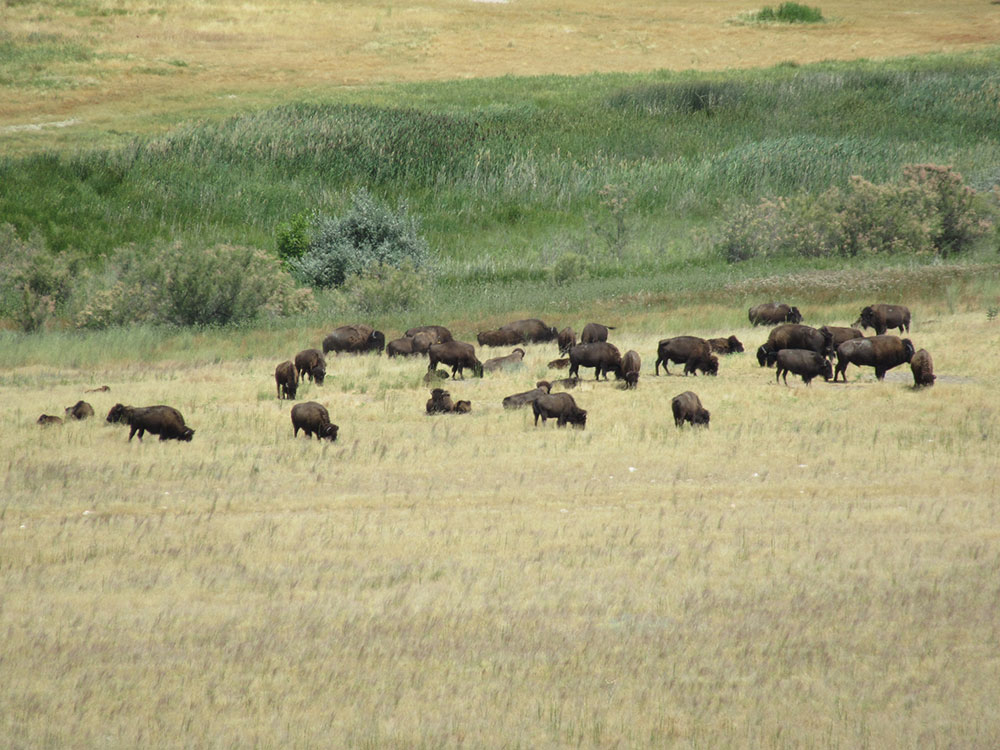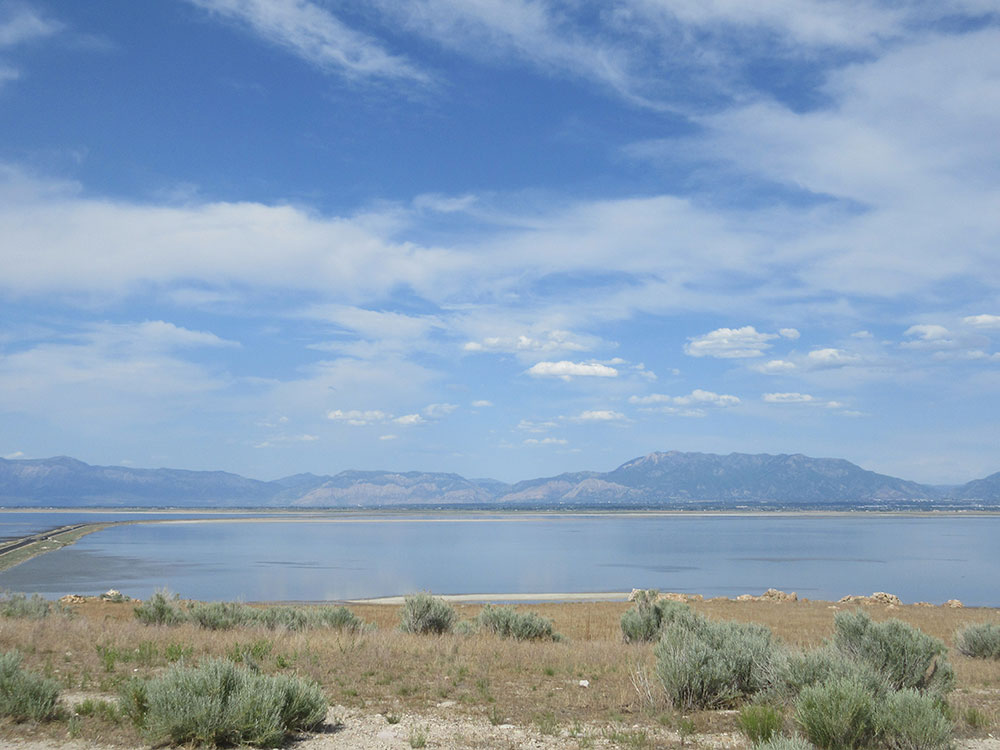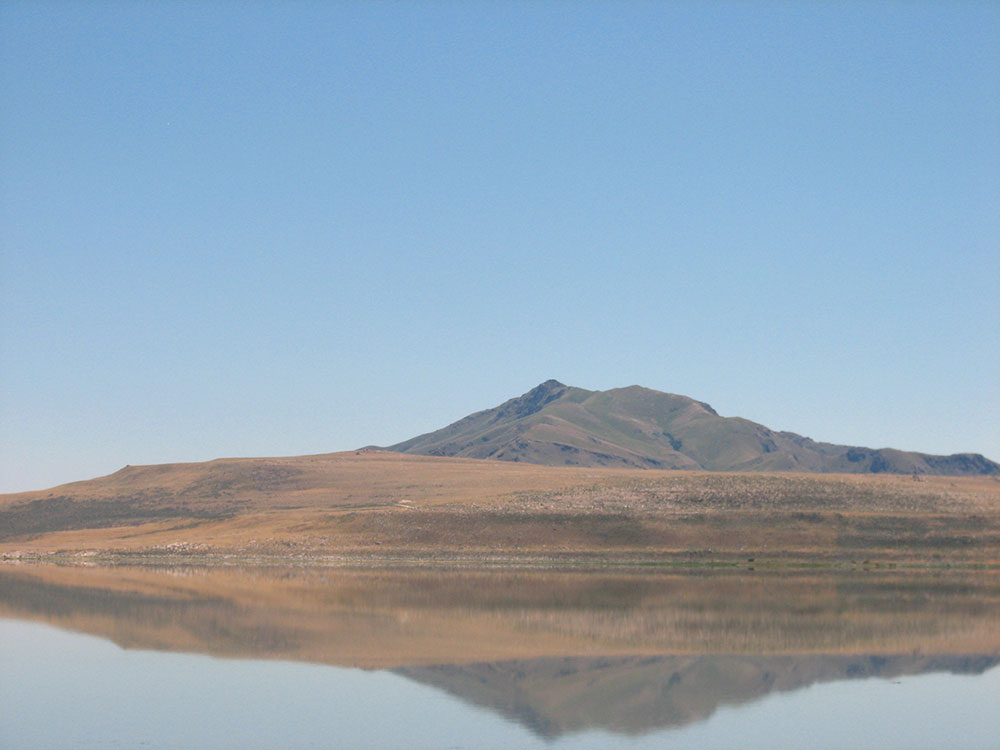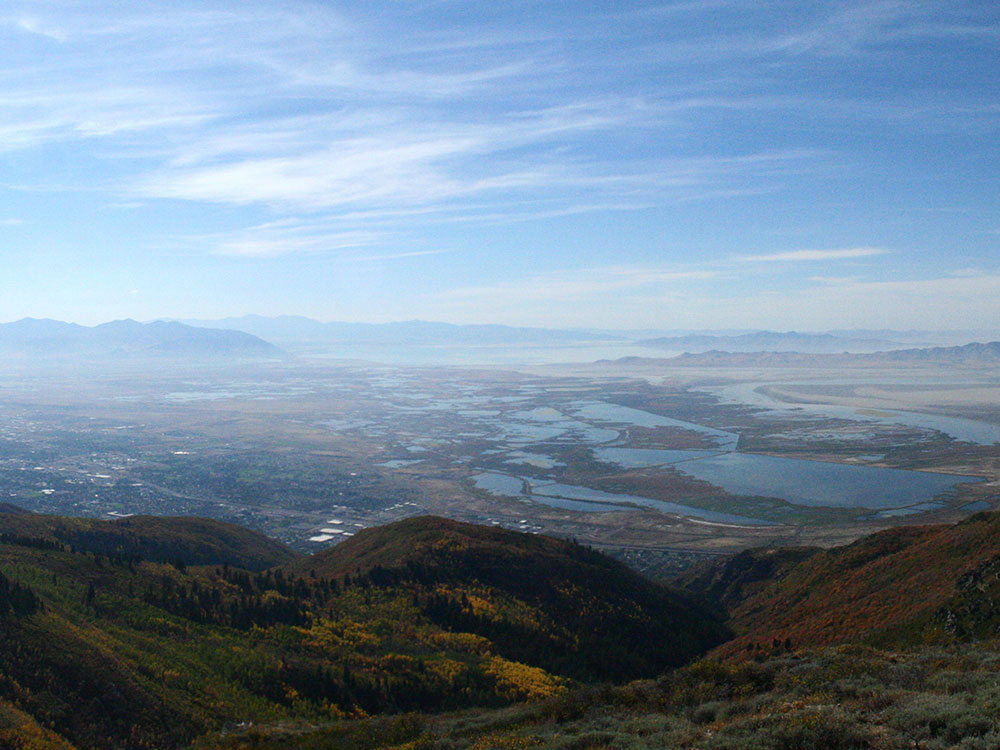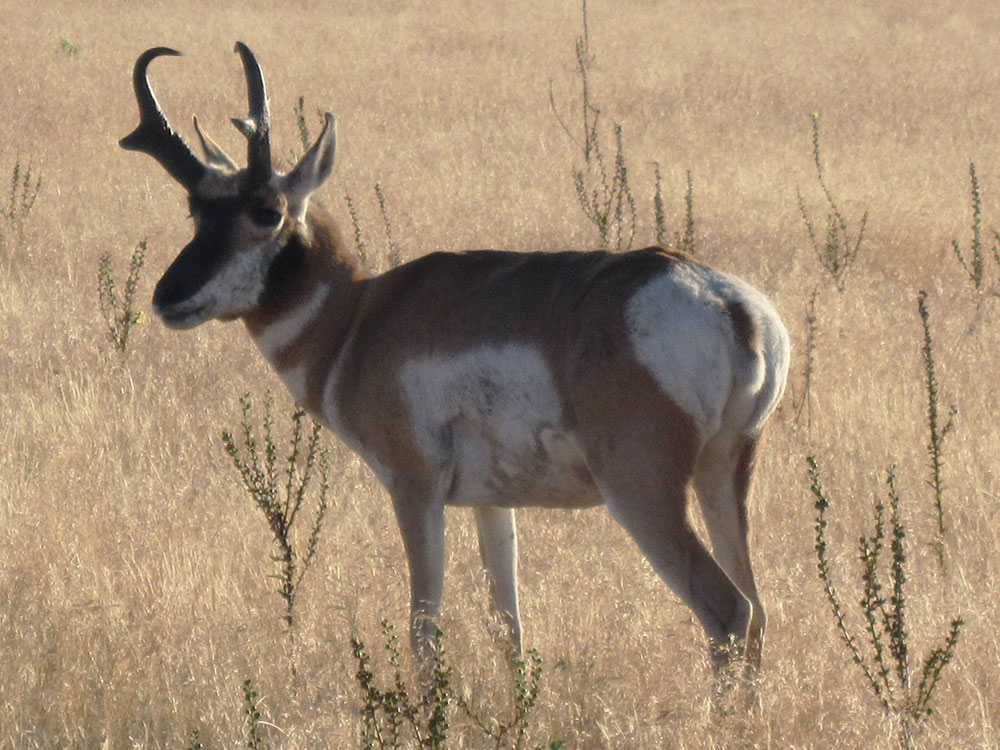Largest of ten islands located within the Great Salt Lake known for its natural scenic beauty and populations of pronghorn, bighorn sheep, American bison and other wildlife
Closed: Thanksgiving, Christmas
Visitor Center Hours: 9am to 5pm
Fielding Garr Ranch Hours: 9am to 5pm
Senior entrance fee (65 years of age): $10.00 per vehicle up to 8 people
Bicycles, Motorcycles and Pedestrians: $3.00 per person
From Salt Lake City (42 miles): Get on I-15 N. Follow I-15 N to UT-108 N/W 2000 N/Antelope Dr in Layton. Take exit 332 from I-15 N. Follow UT-108 N, W 1700 S and Antelope Island Rd to White Rocks Loop Rd.
Overview
Antelope Island, with an area of 42 square miles (109 km2), is the largest of ten islands located within the Great Salt Lake, Utah. The island lies in the southeastern portion of the lake, near Salt Lake City and Davis County, and becomes a peninsula when the lake is at extremely low levels. It is protected as Antelope Island State Park.
The first known non-natives to visit the island were John C. Frémont and Kit Carson during exploration of the Great Salt Lake in 1845, who "rode on horseback over salt from the thickness of a wafer to twelve inches" and "were informed by the Indians that there was an abundance of fresh water on it and plenty of antelope". It is said they shot a pronghorn antelope on the island and in gratitude for the meat they named it Antelope Island.
Antelope Island has natural scenic beauty and holds populations of pronghorn, bighorn sheep, American bison, porcupine, badger, coyote, bobcat, mule deer, and millions of waterfowl. The bison were introduced to the island in 1893, and Antelope Island bison herd has proven to be a valuable genetic pool for bison breeding and conservation purposes. The bison do well, because much of the island is covered by dry, native grassland.
The geology of Antelope Island consists mostly of alluvial plains with prairie grassland on the north, east and south of the island, along with a mountainous central area of older Precambrian metamorphic and igneous rocks and late Precambrian to Paleozoic sedimentary rocks, covered by a thin layer of Quaternary lake deposits, colluvium and alluvium. The Precambrian deposits on Antelope Island are some of the oldest rocks in the United States, older even than the Precambrian rocks at the bottom of the Grand Canyon.
Antelope Island State Park is a Utah state park and the entire island is included in the park. Early in the 20th Century, because of its wildlife and scenic beauty, some suggested that Antelope Island should become a National Park, but the movement never came to fruition. When the Utah State Parks System was created, proposals were made to turn Antelope Island into Antelope Island State Park and the proposal gradually gathered public support, but Antelope Island was privately owned at the time. Originally, Antelope Island was used as a ranch for cattle and sheep, starting from the earliest days of the arrival of the Mormon pioneers into the Salt Lake Valley. The Church of Jesus Christ of Latter-day Saints (Mormons) controlled the ranch on the island from 1848 until approximately 1870. The island was purchased in 1870 by John Dooly, Sr., and he established the Island Improvement Company, which managed the island and ranches from 1884 until 1981. The State of Utah purchased the northern part of the island in 1969, and acquired the remainder in 1981 when the state purchased the historical Fielding Garr Ranch. Subsequently, the cattle and sheep were removed. Antelope Island State Park was established in 1981 as part of the Utah State Parks System.
The island is accessible via a 7-mile causeway from Syracuse in Davis County. Access from Interstate 15 is via exit 332, then west along Antelope Drive (SR-108). The island's shore (all but west side of the island) is mostly flat with beaches and plains to the base of the mountains on the island. These steep mountains are visible from most of the northern Wasatch Front, reaching a maximum elevation of 6,596 feet (2,010 m), which is about 2,500 feet (762 m) above the level of the lake.
On the east side of the island, 11 miles (18 km) south of the causeway, is the Fielding Garr Ranch. Here is the oldest building in Utah built by European-Americans that is still on its original foundation. Classes are sometimes taught at the ranch and tours are available. During the warmer parts of the year horses are also available for hourly rental at the ranch, and a tour guide can take riders out to observe the bison. Another option available to explore the island are on a tour or rental on electric bikes from the Antelope E-Bikes shop located in the marina parking lot. The southern part of the road to the Fielding Garr Ranch is controlled by a gate that is open from 9 a.m. to 6 p.m. on most days.
Antelope Island State Park is open for year-round recreation. It features a marina, beach, campground and hiking trails. Tourists pay a fee to access the park via the islands causeways. The northern 2,000 acres (810 ha) are developed. There are several campsites, a day use area, swimming area, and picnic areas near Bridger Bay on the northwestern end of the island. There is a restaurant on Buffalo Point. The rest of the park is largely undeveloped. A few old roads cross the island and so do some hiking trails. The remnants of old mining claims and the Fielding Garr Ranch are open to park visitors.
Antelope Island is known for its scenic beauty, especially in the northwest quadrant of the island at Buffalo Point and White Rock Bay, where mountains and hills overlook beaches as well as the reflecting waters of the Great Salt Lake and other islands that are visible in the lake. Birdwatching on Antelope Island is popular. Hiking and Cycling are popular activities, but water is scarce and there are few trees on the island. Though not strictly a desert island there are no permanent human inhabitants and conditions are quite dry and can be very hot during the summer. Public beaches, a marina, and overnight camping areas are available and popular on the northern part of the island. Observing wildlife is also popular on Antelope Island, especially the large numbers of bison which are part of the Antelope Island bison herd. Coyotes and antelope are sometimes seen close to the main roads and campsites, and bison often wander across the roads, though the bison are most often found towards the south end of the island near the Fielding Garr Ranch. Other activities on the island include visiting the historic Fielding Garr Ranch, horseback riding and photography.
The Bison Range Ride and Roundup - held every autumn attracts tourists from around the world. Bison are herded from the southern end of the island to holding pens on the northern end of the island.
Antelope Island State Park provides a habitat for a wide variety of wildlife. Despite its name, the park is most famous for its herd of bison. The size of the Antelope Island bison herd ranges from 550 to 700 animals and is controlled by an annual bison round-up. The Antelope Island bison herd is one of the oldest and largest in the United States. The park is also home to jackrabbits, pronghorn, bobcats, mule deer, coyotes, and several species of rodents. The island and Great Salt Lake attract migrating birds. The inland grasslands on the island provide habitat for chukars, burrowing owls, long-billed curlews and several species of birds of prey.
This article uses material from the Wikipedia article "Antelope Island", which is released under the Creative Commons Attribution-Share-Alike License 3.0
